 |
 |
|
||
 |
Mumbai (BOMBAY) Virtual Tour
Elephanta Caves
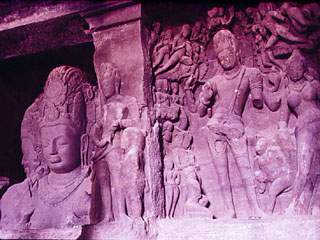
Hewn out of solid rock, the Elephanta Caves date back to 600 AD, and attract more visitors each year than the entire city of Mumbai. No wonder: this place resonates with the spiritual energy of India. The cave complex is a collection of shrines, courtyards, inner cells, grand halls and porticos arranged in the splendid symmetry of Indian rock-cut architecture, and filled with exquisite stone sculptures of Hindu Gods and Goddesses. It is situated on Gharapuri Island in Mumbai's harbour, about an hour's boatride from the Gateway Of India. At the entrance to the caves is the famous Trimurti, the celebrated trinity of Elephanta : there's Lord Brahma the Creator, Lord Vishnu, the preserver and Lord Shiva the Destroyer Unfortunately, many of the sculptures inside have been damaged by iconoclastic Portuguese rulers who took potshots at Hindu Gods with their rifles. And yet somehow, nothing has disturbed the sublime beauty of this place for centuries Bombay Hotels List |
Esselworld
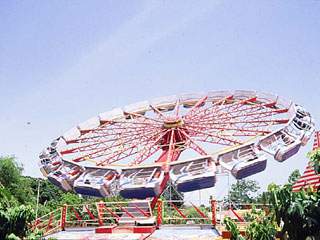
This is Mumbai's only international-style theme park and amusement centre situated close to Gorai Beach. Special ferries get you across to the park and the entrance fee normally takes care of a fixed number of rides. These include the standard roller coaster and adventure themes, plus a water world section where kids can literally run amok. Summer is usually crowded, but the place also offers low budget monsoon packages and special deals on weekends. Check these out before you go |
Film City
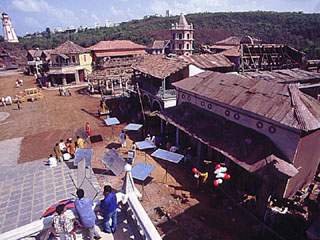
Mockingly called Bollywood by locals and cynics, Film City clings to the outskirts of the National Park, and is practically overrun by assorted stars and starlets -- the demi gods and goddesses of Modern India. Don't snigger. Bollywood churns out over 900 films every year, all packed with those mandatory elements of song, dance, melodrama, violence and erotica that Indian audiences love. Which is probably why Film City sets are heavily booked around the year. They are closed to visitors, but special permissions can always be "obtained" to check out the action. |
Flora Fountain

This is the very heart of Mumbai, circumscribed by stately colonial buildings that stand like proud old sentinels of a bygone era. Flora is the Roman Goddess of Flowers, her pretty alabaster face continually assaulted by grime and pollution. Next to her are a pair of torch bearing stone patriots that rise from the Martyrs Memorial nearby. Flora Fountain is now called Hutatma Chowk or Martyr's Square to honour those who died in the tumultuous birth of Maharashtra State. All around the square sit Mumbai's infamous vendors selling just about everything under the blazing tropical sun -- from cheap nylon saris and ballpoint pens to herbal remedies and sexshop gewgaws. Tooting horns and traffic complete the chaotic picture, but through it all Flora manages to retain her serene composure. |
Gateway of India

Mumbai's most famous monument, this is the starting point for most tourists who want to explore the city. It was built as a triumphal arch to commemorate the visit of King George V and Queen Mary, complete with four turrets and intricate latticework carved into the yellow basalt stone. Ironically, when the Raj ended in 1947, this colonial symbol also became a sort of epitaph: the last of the British ships that set sail for England left from the Gateway. Today this symbol of colonialism has got Indianised, drawing droves of local tourists and citizens. Behind the arch, there are steps leading down to the water. Here, you can get onto one of the bobbing little motor launches, for a short cruise through Mumbai's splendid natural harbour. |
Hanging Gardens
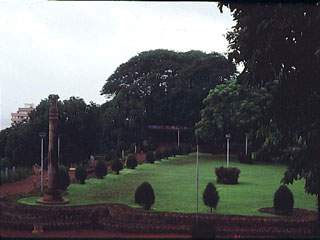
Perched at the top of Malabar Hill, on its western side, just opposite the Kamala Nehru Park, these terraced gardens, also known as Ferozeshah Mehta Gardens, provide lovely sunset views over the Arabian Sea. The park was laid out in the early 1880s over Bombay's main reservoir, some say to cover the water from the potentially contaminating activity of the nearby Towers of Silence. |
High Court
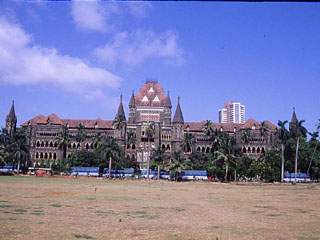
On the fringes of what was once the walled Fort of Mumbai, stands the High Court, another hauntingly beautiful (some say haunted!) structure, in brooding black stone. Opposite it lies the Oval Maidan, formerly a large Bowling Green where English memsahibs came to "take in the air." Today, it is an important lung in a congested city, where aspiring young cricketers practice their paces under the watchful eye of the High Court and the Mumbai University. |
Jehangir Art Gallery
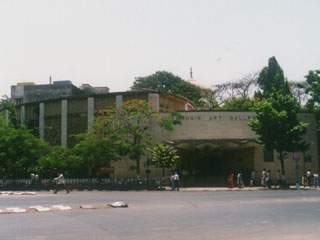
Bombay's main art gallery, just next to the Prince of Wales Museum, displays changing exhibits by well-known Indian artists. There's plenty of art to be seen outside as well, as the plaza in front of the building is full of artists offering their works for sale and their talents for commission assignments. |
Juhu Beach
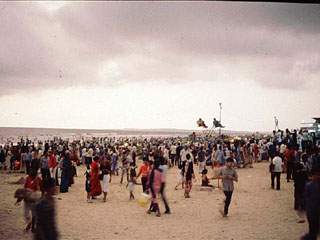
Like Chowpatty, its downtown counterpart, uptown Juhu Beach is also a bourgeois paradise, filled to the gills with screaming children, courting couples and rowdy adolescents. If you want a more fancy excursion, however, retreat behind Juhu's many five star hotels, for a steaming cup of coffee and a splendid view of the coast. The most popular of these beachfront hotels are the Sun and Sand and Holiday Inn. The government run Juhu Centaur also has a 24 hour coffee shop with a view of the sea. Bombay Hotels List |
Kamala Nehru Park
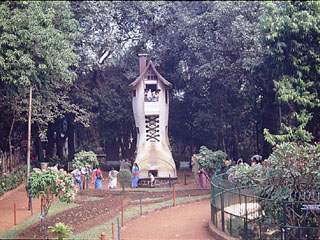
At the top of Mumbai's Malabar Hill where the elite have built their plush modern palaces is Kamala Nehru Park, the hangout of the bourgeois middle class. It has little to offer by way of entertainment, apart from a "Old Woman's Shoe" relegated to a distant corner, but the view of the city is spectacular and unmissable. For most Mumbaiites, Kamala Nehru Park is to Mumbai what the Eiffel Tower is to Paris -- a vantage point that casts a proud eye on the entire city. |
Kanheri Caves
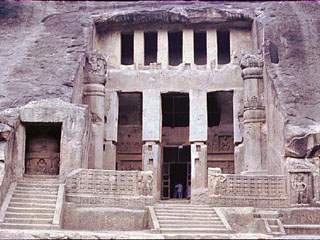
These are Buddhist caves or monasteries where monks practiced their austerities around the first century AD. And unlike the artistic extravagance of Elephanta, they are spartan and bare. Situated in the heart of Mumbai's National Park, the complex contains more than a hundred tiny cells cut into the flank of a hill, each fitted with a stone plinth that evidently served as a bed. There is also a congregation hall supported by huge stone pillars that contains the dagoba, a kind of Buddhist shrine. And if you pick your way up the hill you will find channels and cisterns that are remnants of an ancient water system that channeled rainwater into huge urns. In fact, Kanheri is probably the only clue to the rise and fall of Buddhism in Western India. |
Mahalakshmi Race Course
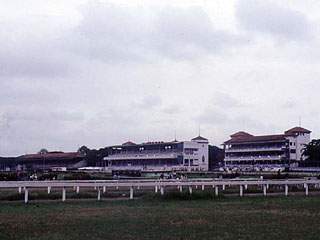
It's not exactly Ascot, but Mumbai's Mahalaxmi Racecourse is probably as close as you can get to rubbing shoulders with high society fillies and cocktail party stallions. During the racing season between November and February, few events are as well attended as the Mumbai Derby, an annual affair with all the traditional English trimmings: hats, gloves, cucumber sandwiches, scones. And of course magnificent thoroughbreds, belonging mostly to Indian booze barons and local industrialists. But save for hardcore punters, these are merely the sideshow. |
Marine Drive
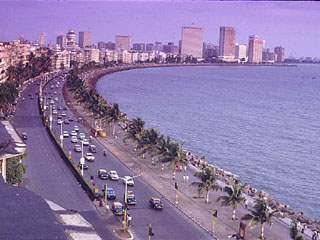
If you're feeling energetic, a stroll down Marine Drive is possibly the best way to discover Mumbai. This is a windswept promenade, flanked by the sea and a row of art deco buildings. Looped between the concrete jungle of Nariman Point, Mumbai's Manhattan, and the leafy green slopes of Malabar hill, Marine Drive was once called the queen's Necklace, strung with glittering street lights like an enormous strand of imperious jewels. It is also one of Mumbai's busiest roads, an important artery for the heavy suburban traffic heading downtown. Cars whiz continually past the two mile stretch, past huddled lovers, children and babies in perambulators. Like other seafronts, this is where most of south Mumbai comes to breathe in some fresh air. |
Marve & Erangal
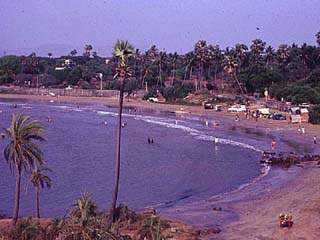
Across the creek from Manori, on the mainland itself, Marve is the retreat of Mumbai's beau monde. This is where most of India's big industrial houses have their weekend bungalows -- beautiful, sprawling mansions tucked along the winding coastal road. Hotels on this stretch mainly cater to corporate types who want to get away from the rat race and offer the standard five star amenities. Futher down at Erangal, the road peters out into a large fishing village inhabited by koli fisherfolk. At its southern tip there's a derelict seventeenth century Portuguese fortress that affords an unbroken view of Mumbai's famous skyline. |
Taraporewala Aquarium
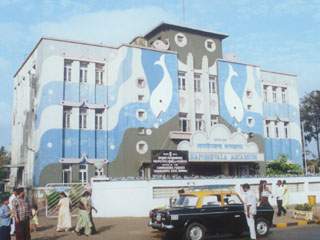
Taraporewala Aquarium on Marine Drive has a good collection of sea and fresh water fish and other marine life. There is a proposal to convert this into an underwater oceanarium, where people can undertake an undersea walk, surrounded by marine life. It is open on all days except Mondays. |
Town Hall - Asiatic Library
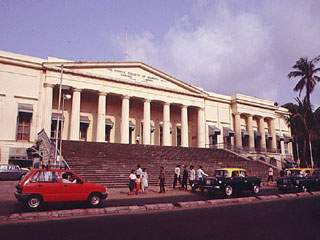
With its old parquet floors, spiral staircases, wrought iron loggias, and exquisite marble statues of forgotten city fathers, the colonnaded Town Hall is perhaps the most regal and elegant of Mumbai's heritage buildings. It houses the Asiatic Society, a library with a collection of 800,000 antique volumes. One of them is a priceless first edition copy of Dante's "Inferno." There is also an impressive numismatic collection of over 1,000 ancient coins and a rare gold mohur belonging to the Mughal Emperor Akbar. You need permission to look at these treasures, but the public library is open to all and usually draws a large number of senior citizens who pore over the local newspapers in the fading grandeur of its reading room. |
Veermata Jeejabai Udyan
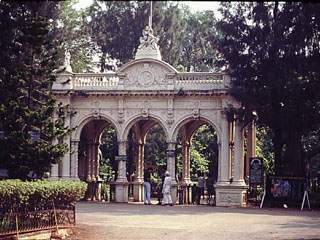
Popularly called Ranee Baug after its namesake, the Victoria Gardens are now rechristened Jijamata Udyan. They are botanical gardens, sprawled over 48 acres and contain some of the oldest trees in the city, some dating back two hundred years! At the entrance is a charming Renaissance clock tower to match the Italian Renaissance-style Victoria and Albert Museum (now the Bhau Dali Ladd Museum) that houses an interesting collection of local archaeological finds. Just behind it is the Mumbai Zoo, a depressing place with animals in bare cast iron-and-stone cages. Avoidable. You can however, opt for an elephant ride on weekends, but the best bet is a stroll through the gorgeous botanical gardens or picnic on the well-kept lawns. |
Victoria Terminus
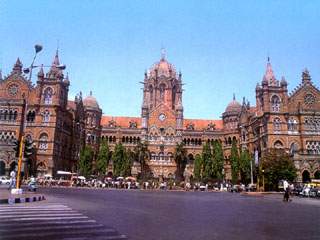
Modeled on the lines of the St Pancras Station in London, Victoria Terminus is undoubtedly the Raj's piece de resistance, Complete with carved stone friezes, stained glass windows and flying buttresses. It is Gothic architecture at its best, an awesome edifice that most citizens view with deep pride. At the top of the central dome stands the triumphant figure of Progress. The station was christened to commemorate Victoria Jubilee Day in 1887 when India's first steam engine puffed out to neighboring Thane, about 45 kms away. Today it has been rechristened Chhatrapati Shivaji Terminus after the Maratha warrior. And the old steam engines have been replaced by electric ones. But to the 2.5 million commuters who push past its massive portals everyday, this is still VT, the pulse of a throbbing city. |
Chor Bazaar
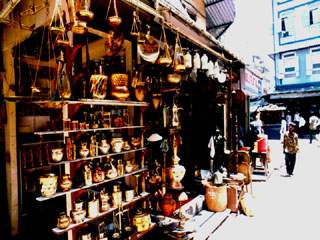
This is Mumbai's famous Thieves Market where bargain-hungry tourists rummage for Ming vases and Muranos at throwaway prices. The main avenue is Motton Street, flanked by rows of little antique shops that look like musty attics and sell just about anything from old ship parts, grandfather clocks and gramophones, to crystal chandeliers and old English tea sets. Others offer authentic Victorian furniture, wonderful for browsers, antiquarians and restorers. Although bargains are sometimes staggering, most of the shop owners are pretty street smart, and could easily take a self - styled aesthete for a ride, so brush up on your art before you go. |
Crawford Market

Poised between what was once the British Fort and the local town, Crawford Market has elements of both. It's a blend of Flemish and Norman architecture with a bas relief depicting Indian peasants in wheat fields just above the main entrance The freize, incidentally, was designed by Lockyard Kipling, father of the famous Rudyard Kipling, and the Kiplings' cottage still stands next to the JJ School of Art across the road. Opposite. Now named after a local patriot called Jyotiba Phule, Crawford Market looks like something out of Victorian London, with its sweet smell of hay and 50 ft high skylit awning that bathes the entire place in natural sunlight. Mountains of fruit and fresh vegetables are sold here at wholesale rates. Next door there's also a meat and poultry section along with stalls selling smuggled cheese and chocolate! Bombay Hotels List |
|
|
|
|
|
|
|
|
|
|
|
|
|
|
|
|
|
|
|
|
|
|
|
 |
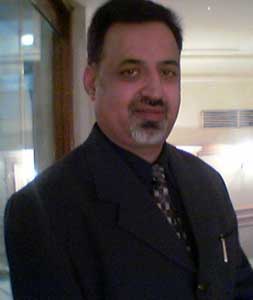 |
Rajesh Chopra's comments Please |
 |
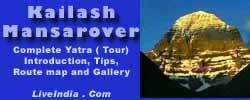 |